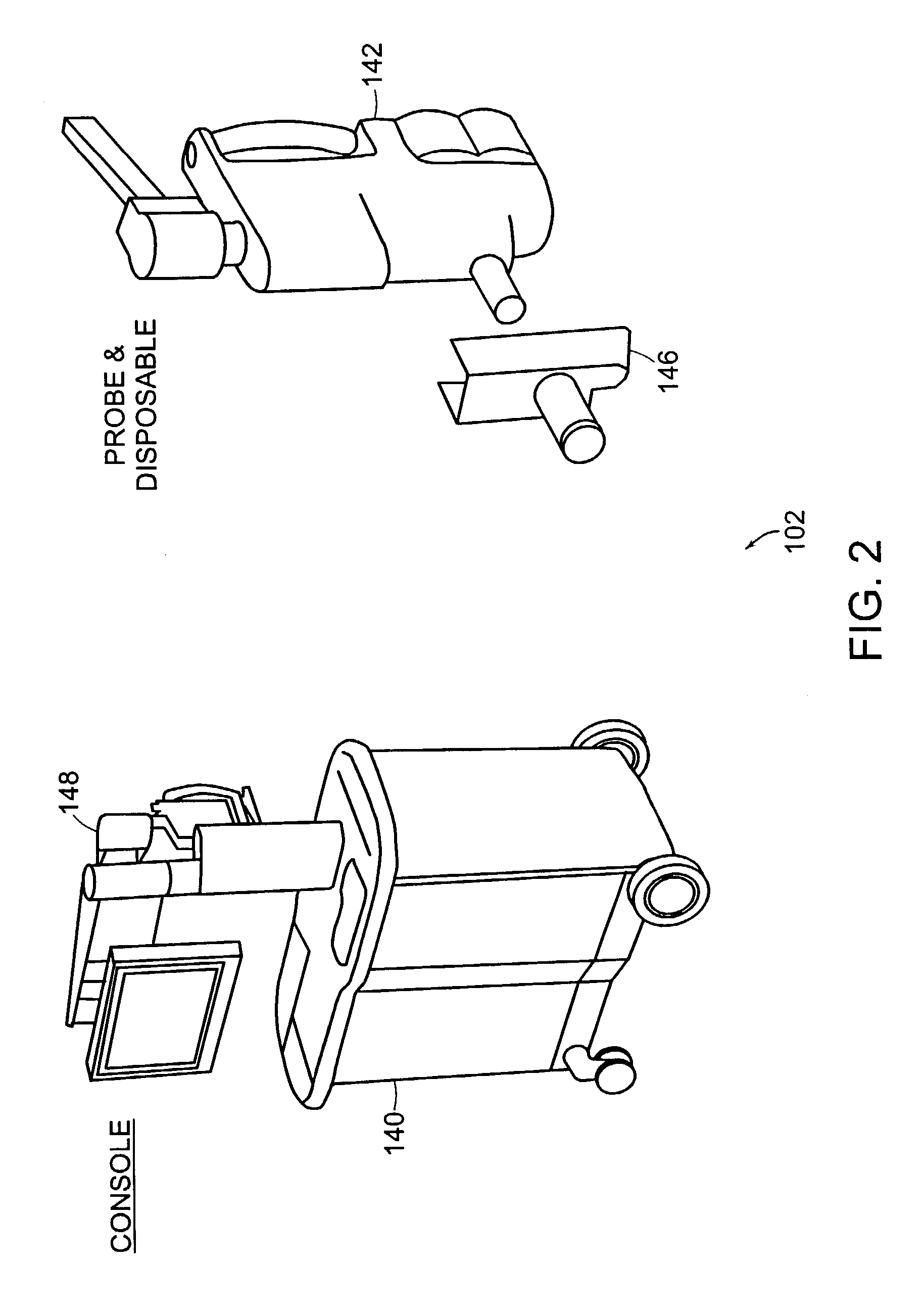Methods and apparatus for characterization of tissue samples
a tissue sample and tissue technology, applied in the field of tissue classification, can solve the problems of indeterminate diagnosis, insufficient colposcopic technique, insufficient direct visual observation alone, etc., and achieve the effect of increasing diagnostic sensitivity and specificity and increasing diagnostic accuracy
- Summary
- Abstract
- Description
- Claims
- Application Information
AI Technical Summary
Benefits of technology
Problems solved by technology
Method used
Image
Examples
Embodiment Construction
[0167]
Table of ContentsPageSystem overview32Instrument38Spectral calibration51Patient scan procedure99Video calibration and focusing102Determining optimal data acquisition window114Motion tracking131Broadband reflectance arbitration and low-signal masking158Classification system overview180Spectral masking186Image masking197Glarevid203[ROI]vid208[ST]vid209Osvid217Bloodvid222Mucusvid226[SP]vid231[VW]vid242[FL]vid256Classifiers265Combining spectral and image data276Image enhancement285Diagnostic display291
[0168]The Table of Contents above is provided as a general organizational guide to the Description of the Illustrative Embodiment. Entries in the Table do not serve to limit support for any given element of the invention to a particular section of the Description.
System 100 Overview
[0169]The invention provides systems and methods for obtaining spectral data and image data from a tissue sample, for processing the data, and for using the data to diagnose the tissue sample. As used here...
PUM
 Login to View More
Login to View More Abstract
Description
Claims
Application Information
 Login to View More
Login to View More - R&D
- Intellectual Property
- Life Sciences
- Materials
- Tech Scout
- Unparalleled Data Quality
- Higher Quality Content
- 60% Fewer Hallucinations
Browse by: Latest US Patents, China's latest patents, Technical Efficacy Thesaurus, Application Domain, Technology Topic, Popular Technical Reports.
© 2025 PatSnap. All rights reserved.Legal|Privacy policy|Modern Slavery Act Transparency Statement|Sitemap|About US| Contact US: help@patsnap.com



